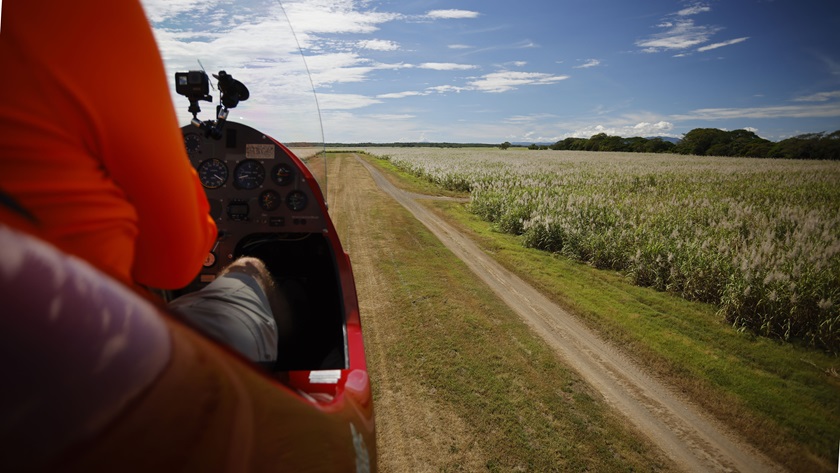Gyro Hero: Slow or slightly less slow
Gyroplanes won’t win any races
One of the most fun aspects of flying gyroplanes is their wide and forgiving speed range.
Having a rotor that's in constant autorotation might sound stressful to a helicopter pilot, but the reality is that a gyroplane rotor pretty much takes care of itself.
It's also an acceptable speed in a gyroplane—sort of. Technically there is no bottom limit to the gyroplane's airspeed range. Pilots can and do make vertical descents. But there's a strong caveat: Because modern gyroplanes feature a conventional tail, the lack of airflow over the horizontal stabilizer can cause pitch control issues. The tail can stall, with a resulting nose drop. At altitude this isn't a big deal, and can be easily corrected. Close to the ground it's more of a problem. Similarly, the lack of airflow over the rudder can cause a lack of rudder authority, and a somewhat unpleasant yawing motion. In both cases, the pusher configuration of the engine means adding power will often bring back control authority.
In the MTOsport that I'm flying, the book lists a minimum forward speed of about 19 knots. Slowing down feels very much like entering slow flight in an airplane. When level, bring off the power, maintain altitude, and below 40 knots you can start to feel the bottom drop out a bit. The difference being that if you maintain that in an airplane, the wing will stall. In a gyroplane you'll descend, but the rotor won't stall. If you add power the ship stays in a very comfortable 30-knot, straight-and-level condition. Add power to climb and reduce it to descend, just like in an airplane.
In fact, this condition is behind the power curve, just like an airplane. The rotor creates so much drag that pulling up more decreases airspeed and will soon result in a descent. And recovery can only happen when the nose comes down and some of the drag is reduced. Apparently many accidents have occurred because pilots didn't understand this concept, and they tried to pull their way out of danger.
Unlike most light airplanes, 30 knots in a gyroplane feels very controlled and comfortable. It's a good loitering speed, and the school I'm flying with will use these lower speeds when circling for photos or to observe a fire when they're flying on a government contract. It's no surprise that gyros can make a highly affordable alternative to helicopters for police departments and other public benefit flying. Although you can't do external load lifts and other precise hover work, the gyro is a great aerial observation platform.
At the top end, gyroplanes aren't going to win any speed contests. Especially in an open-cockpit aircraft, anything beyond 70 knots starts to feel a bit punishing. Cowled gyroplanes fly a bit faster, and obviously keep the pilot more comfortable at those speeds. And with such a massive drag device in the form of the rotor, you can fly as fast as you like pretty much to the runway threshold and still not worry too much about landing long.





